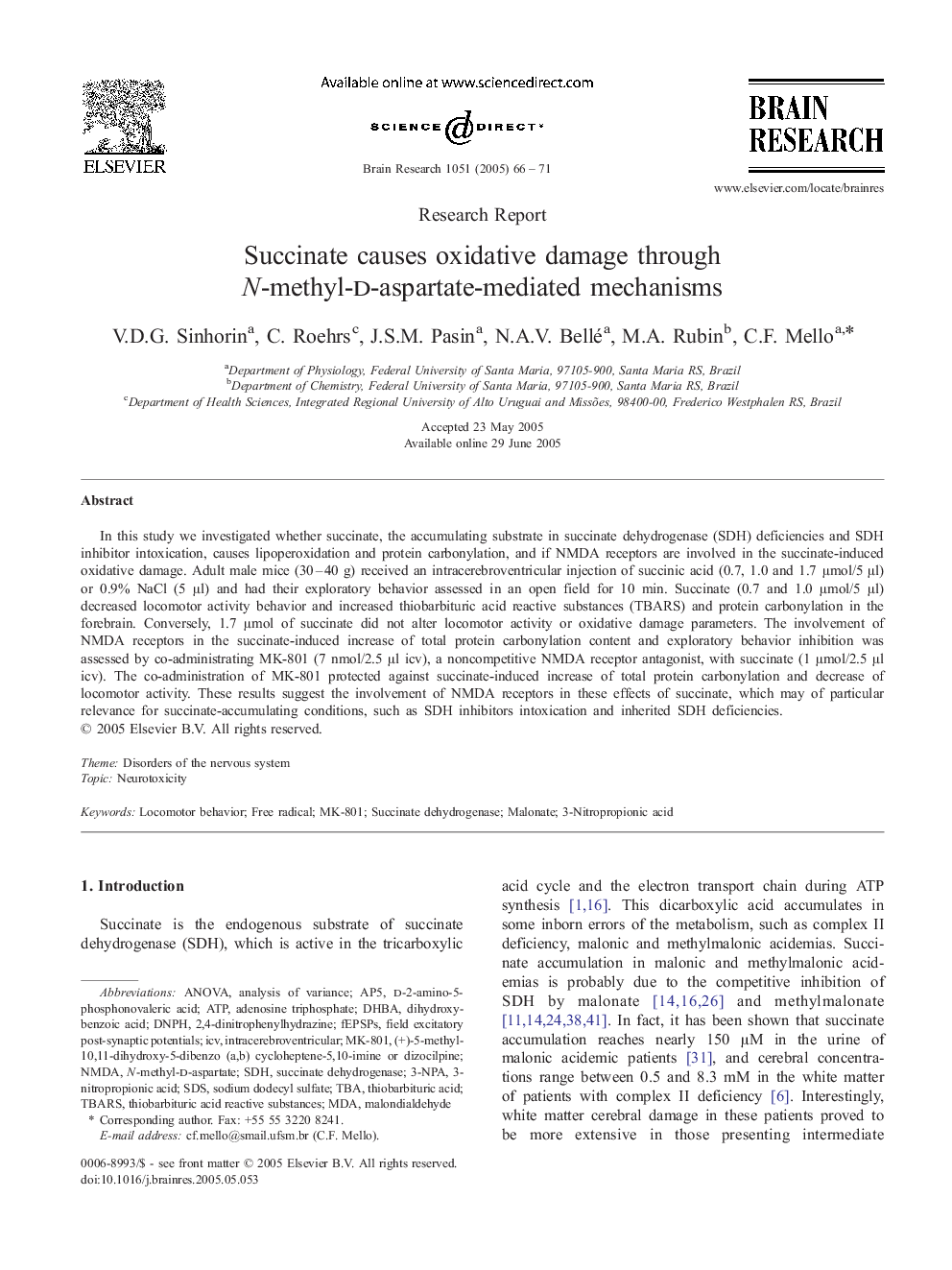| Article ID | Journal | Published Year | Pages | File Type |
|---|---|---|---|---|
| 9416052 | Brain Research | 2005 | 6 Pages |
Abstract
In this study we investigated whether succinate, the accumulating substrate in succinate dehydrogenase (SDH) deficiencies and SDH inhibitor intoxication, causes lipoperoxidation and protein carbonylation, and if NMDA receptors are involved in the succinate-induced oxidative damage. Adult male mice (30-40 g) received an intracerebroventricular injection of succinic acid (0.7, 1.0 and 1.7 μmol/5 μl) or 0.9% NaCl (5 μl) and had their exploratory behavior assessed in an open field for 10 min. Succinate (0.7 and 1.0 μmol/5 μl) decreased locomotor activity behavior and increased thiobarbituric acid reactive substances (TBARS) and protein carbonylation in the forebrain. Conversely, 1.7 μmol of succinate did not alter locomotor activity or oxidative damage parameters. The involvement of NMDA receptors in the succinate-induced increase of total protein carbonylation content and exploratory behavior inhibition was assessed by co-administrating MK-801 (7 nmol/2.5 μl icv), a noncompetitive NMDA receptor antagonist, with succinate (1 μmol/2.5 μl icv). The co-administration of MK-801 protected against succinate-induced increase of total protein carbonylation and decrease of locomotor activity. These results suggest the involvement of NMDA receptors in these effects of succinate, which may of particular relevance for succinate-accumulating conditions, such as SDH inhibitors intoxication and inherited SDH deficiencies.
Keywords
Related Topics
Life Sciences
Neuroscience
Neuroscience (General)
Authors
V.D.G. Sinhorin, C. Roehrs, J.S.M. Pasin, N.A.V. Bellé, M.A. Rubin, C.F. Mello,
